方案详情文
智能文字提取功能测试中
发酵罐在乳酸菌培养中的应用乳酸菌是一种较为常用的发酵菌种,在食品发酵中能够改善风味,同时还具有延长保质期的优势。另外,乳酸菌能将食品风味不断丰富,进而给人增强一定的味觉享受。Fermenter System for Lactobacillus.The fermenter is supplied in a configuration to provide an excellent bioreactor for this purpose. * Powerful, top drive system with lubricated mechanical seal (magnetic options for Techfors) * Jacketed system for efficient heat transfer. * High-accuracy pumps for addition of pH control reagents, antifoam and feed (option on some units) * Control of dissolved oxygen by stirrer speed as standard (air flow, pressure & oxygen, supplement options) * Optional analogue feed pump for variable speed additon * Analogue input/output for addition of external pumpsand sensros for eg. OD Vessels: All vessels are stainless steel (1.4435) with a dished base and top plate in several standard sizes. Temperature control can be by water circulation with either a heating element or steam injection into a pocket/exchanger.All vessels are with a mechanical seal drive (magnetic coupling for cells). The drive shaft has a simple and secure connection for the motor. The top plate is equipped with 10mm, PG13.5 and standard, rounded -thread 19mm ports which can be fitted with a septum and retaining collar to allow flaming of the port during inoculation etc. (number and type varies according to specific fermenter). Bottom ports are 25mm Ingold standard and numbers vary by size.The vessels are sterilized in situ (Techfors and Techfors S) with automatic sequencing. Reagent bottles and inlet pipes etc are usually autoclaved separately (options & alternatives, depending on size and configuration).. StirringThe fermenter has a powerful brushless motor with integral speed controller for speeds from 100 - 1500 rpm, depending on the vessel size and number of impellors. Powerful fluid cooled motors are standard for Techfors.x-DDC Control System:All fermenter models except Minifors incorporate the x-DDC (eXtended DDC microprocessor control) which uses a high-performance digital system. With the use of almost identical instrumentation, the step from Bench-scale to larger equipment is made considerably easier.The control panel is compact and is usually mounted above the base unit for clear visibility. The panel can be removed if required. Programming of parameters is via a splashproof keypad with a rotary knob for navigation and an LCD display. Communication is via a robust data-cable. For each fermenter, process information such as parameter set points, PID values etc are stored automatically on an interchangeable "memory card" . This allows changes in fermentation processes by fitting an alternative card or downloading a recipe without re-programming and the chance of errors plus an unlimited number of recipes to be stored.An "open frame" gas supply system with four magnetic valves allow addition of components for automatic mixing of gasses for oxygen supplementation. An optional mass flow control valve ensures a controlled, steady flow of gas into the vessel. Agitation & temperature control. Four high-accuracy digital peristaltic pumps supplied as standard with the option to add an integral analogue feed pump. Addition and removal of liquids is therefore possible with a standard system (using the antifoam pump for medium take-off). Accepts a conductive probe for automatic control of antifoam addition or media addition/removal in a vessel. Works together with the integral peristaltic pumps.Set points and control strategiesSet points are entered into the controller prior to inoculation and stored on a memory card (Iexcept Minifors). The vessel was allowed to equilibrate prior to inoculation. The pO2 actual value may stay above the set point up to (and some times after) inoculation.Temperature: 25-30°CpH: 6.3-6.8DO :50-85% for aerobically grown culturesAgitation :700 - 1500 rpm for aerobically grown cultures, 300-400rpm for anaerobic growth.O2 :Optional supplementation of the air stream using a magnetic valve (rotameter)Anaerobic: 5% CO2, 95% N2 or 0,5% O2, 20% CO2 And 79.5% N2.PH ControlThe pH probe is calibrated prior to the autoclave cycle (refer to Instruction Manual). pH control parameters are:Base :2M NaoHAcid :not normally required due to acid production by the bacteriumTransfer tubing: Narrow bore silicone tubing with Marprene insert, as supplied (4mm OD)Vessel inlet: 4mm fixed pipes in the vessel top platePID values: factory default setting should be used unless it is clear adjustment is needed (hunt or drift).Dissolved Oxygen (pO2) ControlThe dissolved oxygen electrode 100% is normally calibrated after the autoclave cycle (refer to Instruction Manual) but can be calibrated in air beforehand for cell culture applications. Control of pO2 can be cascaded eg rpm, airflow, gasmix. The controller automatically maintains the pO2 setpoint. The gas flow rate should be set at a fairly low rate initially eg. 0.3 vessel volumes per minute (VVM) and raised incrementally during the fermentation to 1-1.5VVM whenever the stirrer cannot maintain the correct pO2 value (usually required within an hour or so).Fed-batch/Continuous FeedFeed pumps can be calibrated using the standard tubing to keep track of the liquid quantities entering and exiting the vessel. Either a digital pump with shot and delay dosing or an analogue, continuously-variable pump can be used for medium addition. Samples should be taken several times a day to measure carbon-source concentration and cell density (eg Optical Density at 600nm). Iris v5 software can be used to control nutrient addition. Fed-batch does not involve removal of liquid. Feeding can be related to dissolved oxygen concentration by using software control sequences.Foam ControlThis can be achieved by adding a small quantity of antifoam into the medium before inoculation (eg. 0.005 -0.01%) and subsequently controlled by a liquid antifoam delivered on demand into the vessel (or at regular time intervals). An antifoam probe uses conductivity to detect the presence of foam. The clear sheathing around the probe should not be damaged or false positive readings will occur. Example methodologyMediumMRS or YPT medium plus glucose and other supplements. Use of antifoam in the medium can help suppress foaming. Supplements are filter sterilized and added after sterilization of the bulk medium in the vessel (10% loss of volume is typically experienced during the sterilization process; allow for this). InoculumPrepared in an Infors shaker (Minitron or Multitron) from a 24 culture of a few colonies picked from an agar plate and inoculated into 250ml shake flasks containing 50ml of medium. Shaker speed is 220rpm and a temperature 30oC. Use these to inoculate the fermenter as a 5%.by volume concentrate of actively growing cells to give an initial cell density of approximately 106 cells/ml.MethodElectrodes should have been calibrated before autoclaving (pH and zero point pO2).• Sterilize the vessel with the basic medium. Adjust for evaporation losses, if necessary.• Allow to cool to operating conditions and then calibrate pO2 100% value. • Add any supplements then inoculate using a syringe or transfer line. Take a To sample for pH, optical density and carbon source measurement. Direct cell counts can be made and cells plated to check purity and measure viability. Dry weight values can be related to optical density readings and total/viable counts as required. Sample at eg. 1 hour intervals to follow the process. After a lag phase of several hours a strong logarithmic growth should occur with substrate depletion unless fed-batch or continuous operation is implemented. Optical density values should increase quickly and level off when exponential growth has finished. The end of active growth may also be marked by a rise in the dissolved oxygen concentration/decrease in stirrer speed. Typically, a 72 hour culture should yield approximately 108 cells/ml.Lactobacilli species are a diverse group including facultative aerobes, micro-aerophils and strict anaerobes so only general guidelines can be provided as a starting point.发酵罐在乳酸菌培养中的应用 乳酸菌是一种较为常用的发酵菌种,在食品发酵中能够改善风味,同时还具有延长保质期的优势。另外,乳酸菌能将食品风味不断丰富,进而给人增强一定的味觉享受。 Fermenter System for Lactobacillus. The fermenter is supplied in a configuration to provide an excellent bioreactor forthis purpose. * Powerful, top drive system with lubricated mechanical seal (magnetic options forTechfors) * Jacketed system for efficient heat transfer. * High-accuracy pumps for addition of pH control reagents, antifoam and feed(option on some units) * Control of dissolved oxygen by stirrer speed as standard (air flow, pressure &oxygen, supplement options) * Optional analogue feed pump for variable speed additon * Analogue input/output for addition of external pumpsand sensros for eg. OD Vessels: All vessels are stainless steel (1.4435) with a dished base and top plate in severalstandard sizes. Temperature control can be by water circulation with either aheating element or steam injection into a pocket/exchanger. All vessels are with a mechanical seal drive (magnetic coupling for cells). The driveshaft has a simple and secure connection for the motor. The top plate is equippedwith 10mm, PG13.5 and standard, rounded -thread 19mm ports which can be fitted with a septum and retaining collar to allow flaming of the port during inoculationetc. (number and type varies according to specific fermenter). Bottom ports are25mm Ingold standard and numbers vary by size. The vesselsare sterilized iiin situ (Techfors and Techfors S) with aauutomaticsequencing. Reagent bottles and inlet pipes etc are usually autoclaved separately(options & alternatives, depending on size and configuration).. Stirring The fermenter has a powerful brushless motor with integral speed controller forspeeds from 100-1500 rpm, depending on the vessel size and number of impellors.Powerful fluid cooled motors are standard for Techfors. X-DDC Control System: All fermenter models except Minifors incorporate the x-DDC (eXtended DDCmicroprocessor control) which uses a high-performance digital system. With theuse of almost identical instrumentation, the step from Bench-scale to largerequipment is made considerably easier. The control panel is compact and is usually mounted above the base unit for clearvisibility. The panel can be removed if required. Programming of parameters is via asplashproof keypad with a rrotary knob for navigation and an LCD display.Communication is via a robust data-cable. For each fermenter, process informationsuch as parameter set points, PID values etc are stored automatically on aninterchangeable "memory card". This allows changes in fermentation processes byfitting an alternative card or downloading a recipe without re-programming and the chance of errors plus an unlimited number of recipes to be stored. An "open frame" gas supply system with four magnetic valves allow addition ofcomponents for automatic mixing of gasses for oxygen supplementation. Anoptional mass flow control valve ensures a controlled, steady flow of gas into thevessel. Agitation & temperature control. Four high-accuracy digital peristalticpumps supplied as standard with the option to add an integral analogue feedpump. Addition and removal of liquids is therefore possible with a standard system(using the antifoam pump for medium take-off). Accepts a conductive probe forautomatic control of antifoam addition or media addition/removal in a vessel.Works together with the integral peristaltic pumps. Set points and control strategies Set points are entered into the controller prior to inoculation and stored on amemory card (lexcept Minifors). The vessel was allowed to equilibrate prior toinoculation. The pO2 actual value may stay above the set point up to (and sometimes after) inoculation. lemperature: 25-30℃ pH: 6.3-6.8 DO : 50-85% for aerobically grown cultures Agitation::700-1500 rpm for aerobically grown cultures, 300-400rpm foranaerobic growth. 02 : Optional supplementation of the air stream using a magnetic valve (rotameter)Anaerobic: 5% CO2, 95% N2 or 0,5% 02, 20% CO2 And 79.5% N2. PH Control The pH probe is calibrated prior to the autoclave cycle (refer to Instruction Manual).pH control parameters are: Base : 2M NaoH Acid : not normally required due to acid production by the bacterium Transfer tubing : Narrow bore silicone tubing with Marprene insert, as supplied(4mm OD) Vessel inlet:4mm fixed pipes in the vessel top plate PID values: factory default setting should be used unless it is clear adjustment isneeded (hunt or drift). Dissolved Oxygen (pO2) Control The dissolved oxygen electrode 100% is normally calibrated after the autoclavecycle (refer to Instruction Manual) but can be calibrated in air beforehand for cellculture applications. Control of pO2 can be cascaded eg rpm, airflow, gasmix. Thecontroller automatically maintains the pO2 setpoint. The gas flow rate should beset at a fairly low rate initially eg. 0.3 vessel volumes per minute (VVM) and raisedincrementally during the fermentation to 1-1.5VVM whenever the stirrer cannotmaintain the correct pO2 value (usually required within an hour or so). Fed-batch/Continuous Feed Feed pumps can be calibrated using the standard tubing to keep track of the liquidquantities entering and exiting the vessel. Either a digital pump with shot and delaydosing or an analogue, continuously-variable pump can be used for mediumaddition. Samples should be taken several times a day to measure carbon-sourceconcentration and cell density (eg Optical Density at 600nm). Iris v5 software canbe used to control nutrient addition. Fed-batch does not involve removal of liquid.Feeding can be related to dissolved oxygen concentration by using softwarecontrol sequences. Foam Control This can be achieved by adding a small quantity of antifoam into the mediumbefore inoculation (eg. 0.005 -0.01%) and subsequently controlled by a liquidantifoam delivered on demand into the vessel (or at regular time intervals). Anantifoam probe uses conductivity to detect the presence of foam. The clearsheathing around the probe should not be damaged or false positive readings willOccur. Example methodology Medium MRS or YPT medium plus glucose and other supplements. Use of antifoam in themedium can help suppress foaming. Supplements are filter sterilized and addedafter sterilization of the bulk medium in the vessel (10% loss of volume is typicallyexperienced during the sterilization process; allow for this). Inoculum Prepared in an Infors shaker (Minitron or Multitron) from a 24 culture of a fewcolonies picked from an agar plate and inoculated into 250ml shake flaskscontaining 50ml of medium. Shaker speed is 220rpm and a temperature 30oC. Usethese to inoculate the fermenter as a 5%.by volume concentrate of actively growingcells to give an initial cell density of approximately 106 cells/ml. Method Electrodes should have been calibrated before autoclaving (pH and zero point pO2). ·SSterilize the vessel with the basic medium. Adjust for evaporation losses, ifnecessary. · Allow to cool to operating conditions and then calibrate pO2 100% value. · Add any supplements then inoculate using a syringe or transfer line. Take a Tosample for pH, optical density and carbon source measurement. Direct cell countscan be made and cells plated to check purity and measure viability. Dry weightvalues can be related to optical density readings and total/viable counts as required.Sample at eg. 1 hour intervals to follow the process. After a lag phase of several hours a strong logarithmic growth should occur withsubstrate depletion unless fed-batch or continuous operation is implemented.Optical density values should increase quickly and level off when exponentialgrowth has finished. The end of active growth may also be marked by a rise in thedissolved oxygen concentration/decrease in stirrer speed. Typically, a 72 hour culture should yield approximately 108 cells/ml. Lactobacillispecies are a diverse group includingfacultativeaerobes.micro-aerophils and strict anaerobes so only general guidelines can be provided asa starting point.
关闭-
1/7
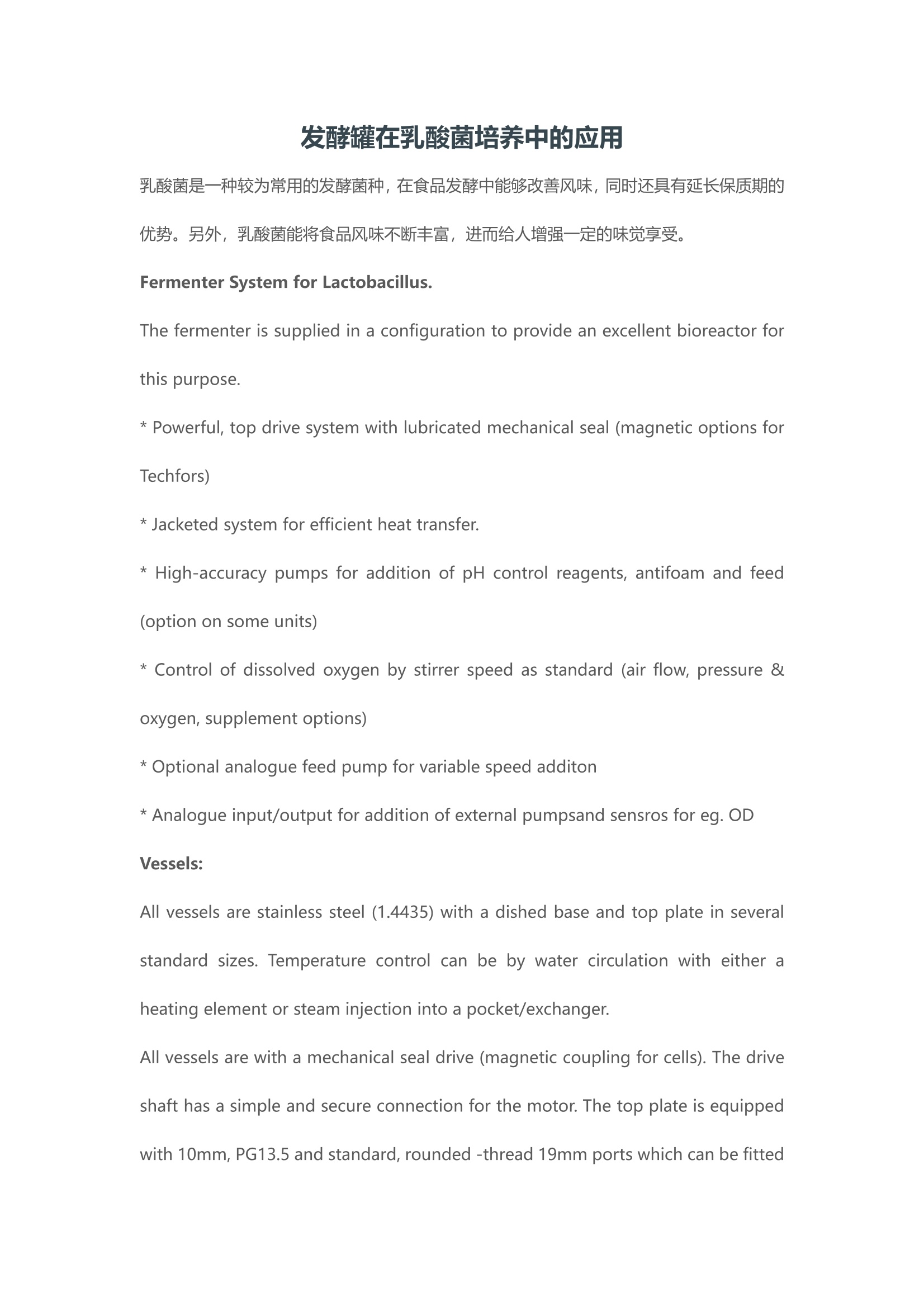
-
2/7
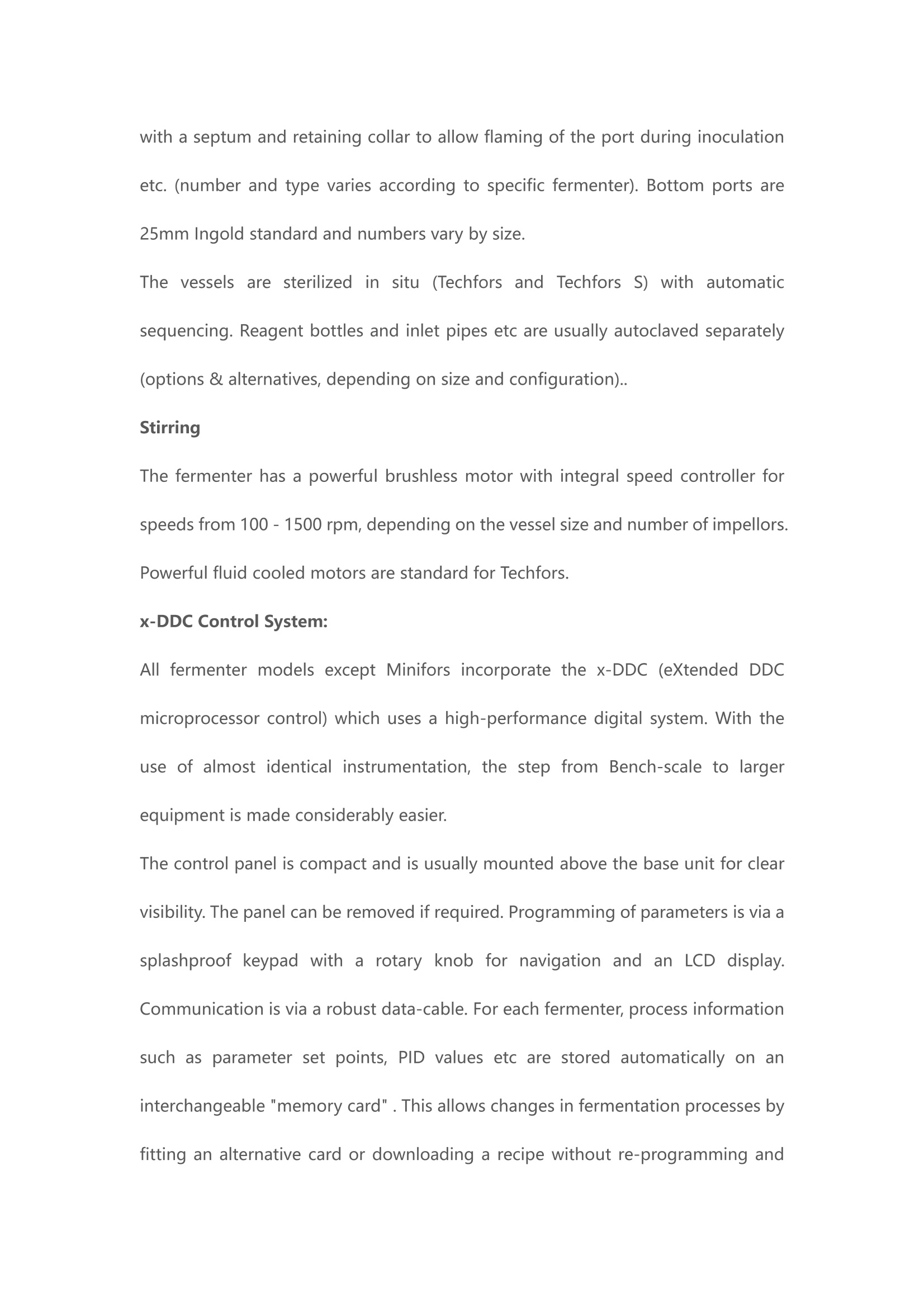
还剩5页未读,是否继续阅读?
继续免费阅读全文产品配置单
上海博奥思生物技术有限公司为您提供《发酵罐在乳酸菌培养中的应用》,该方案主要用于生物发酵中应用介绍检测,参考标准《暂无》,《发酵罐在乳酸菌培养中的应用》用到的仪器有博奥思 B3/B5/B7 通用振荡培养箱、博奥思 BCI-850C 细胞工厂 / CO2 培养箱、博奥思 BioBench 台式原位灭菌生物反应器、博奥思 BioBench Twin 双位平行反应器、博奥思 BioTwin 中试原位灭菌生物反应器、博奥思 C7/C5/C3 多功能细胞培养振荡培养箱、博奥思 BCI-850CH 大型柜式 CO2 摇床振荡培养箱。
我要纠错
推荐专场
相关方案


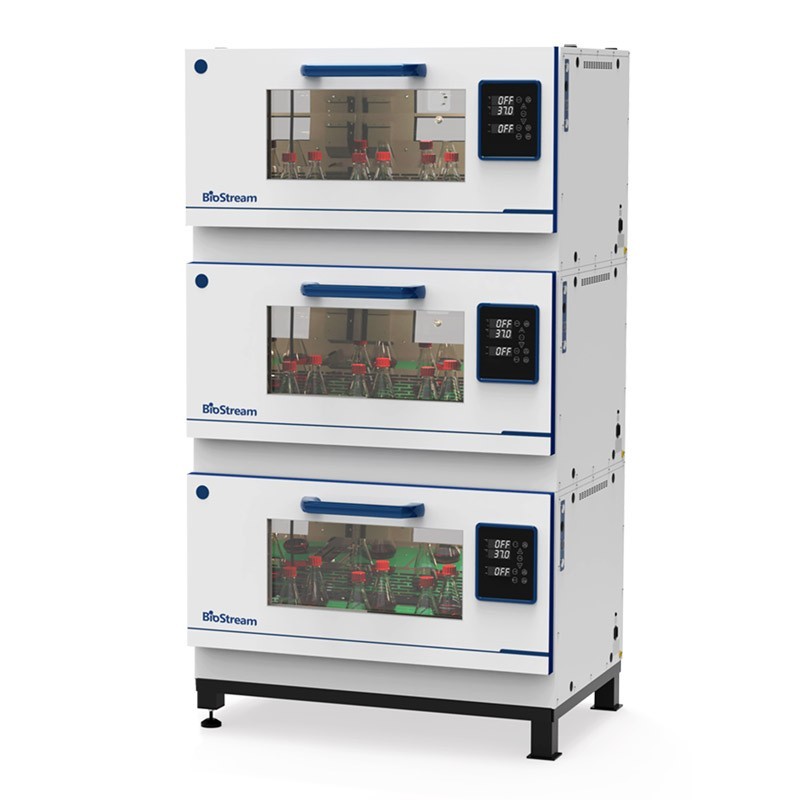
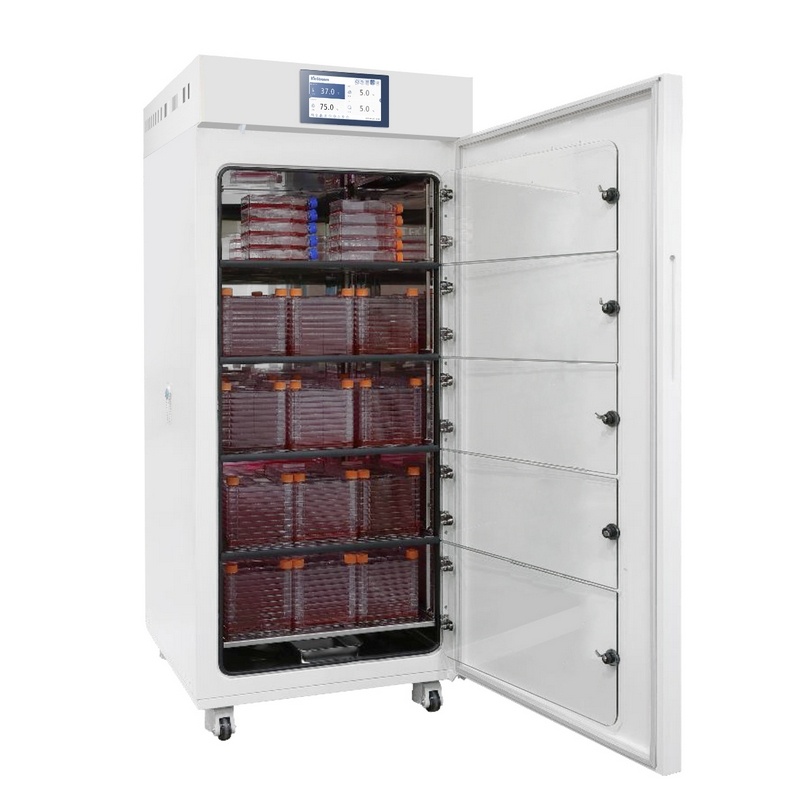
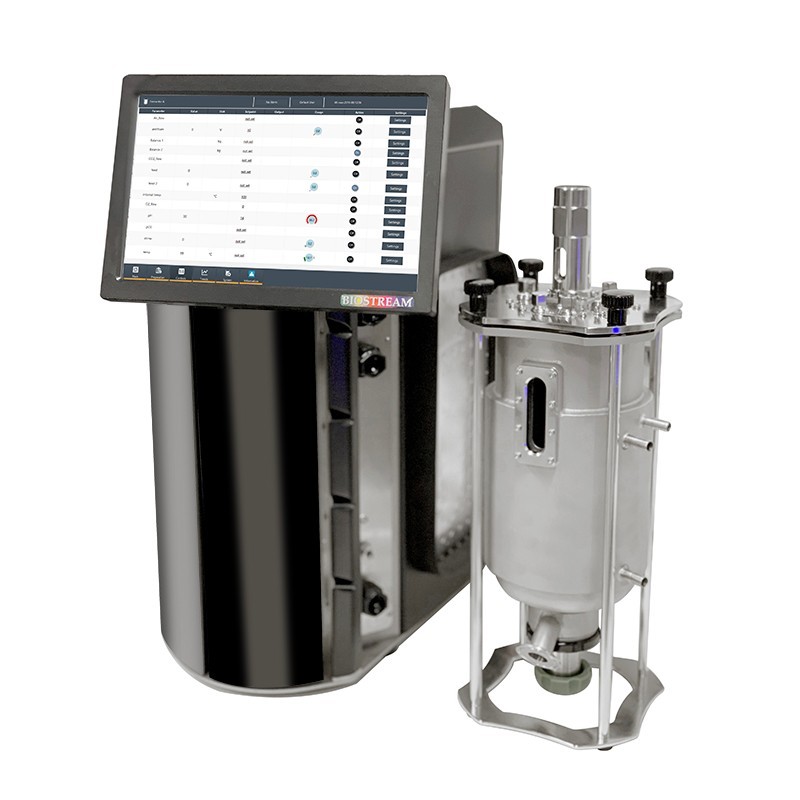
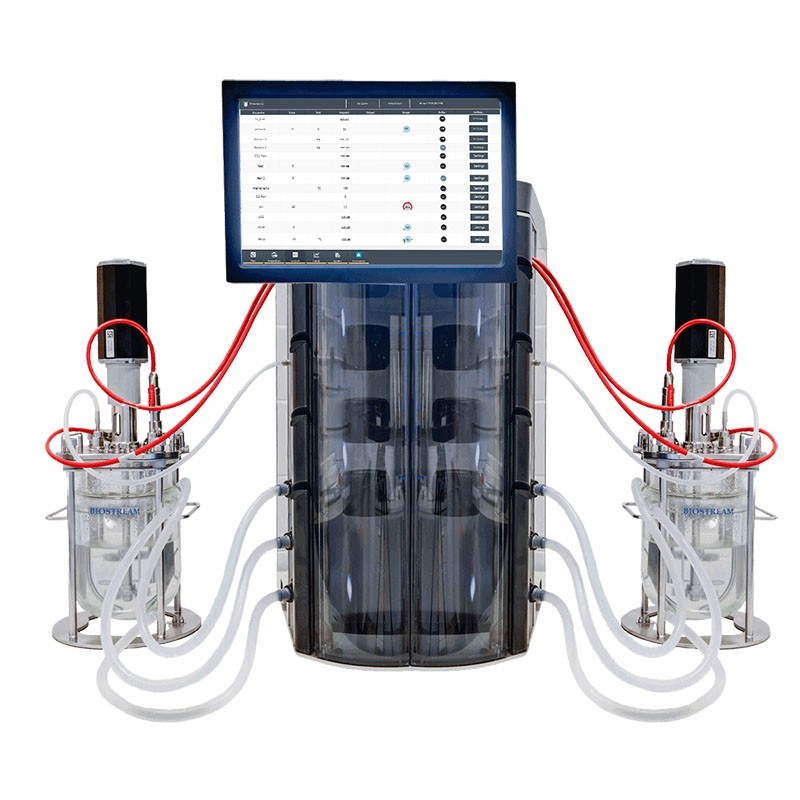
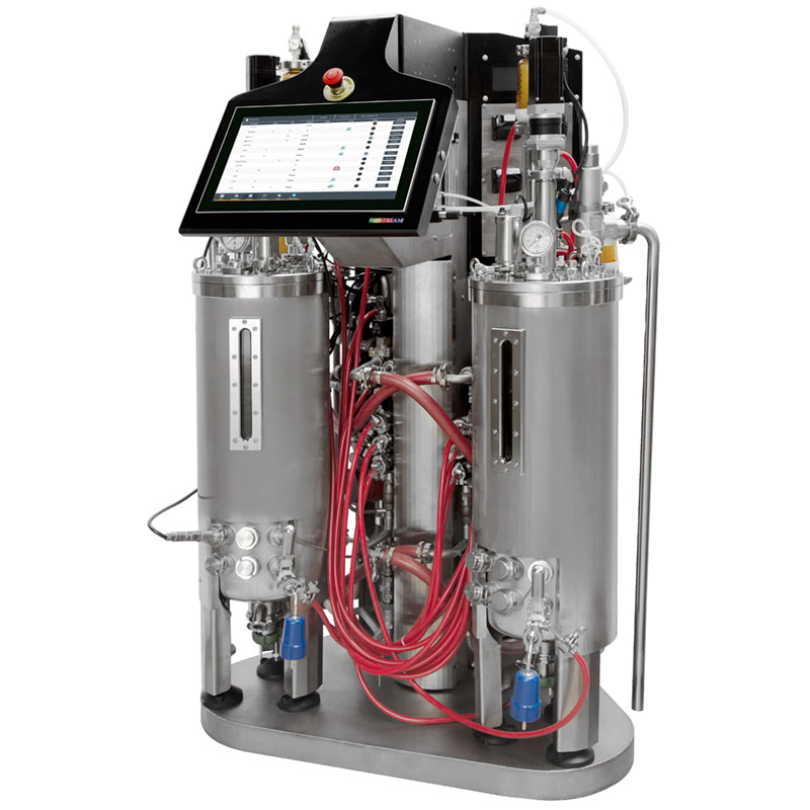
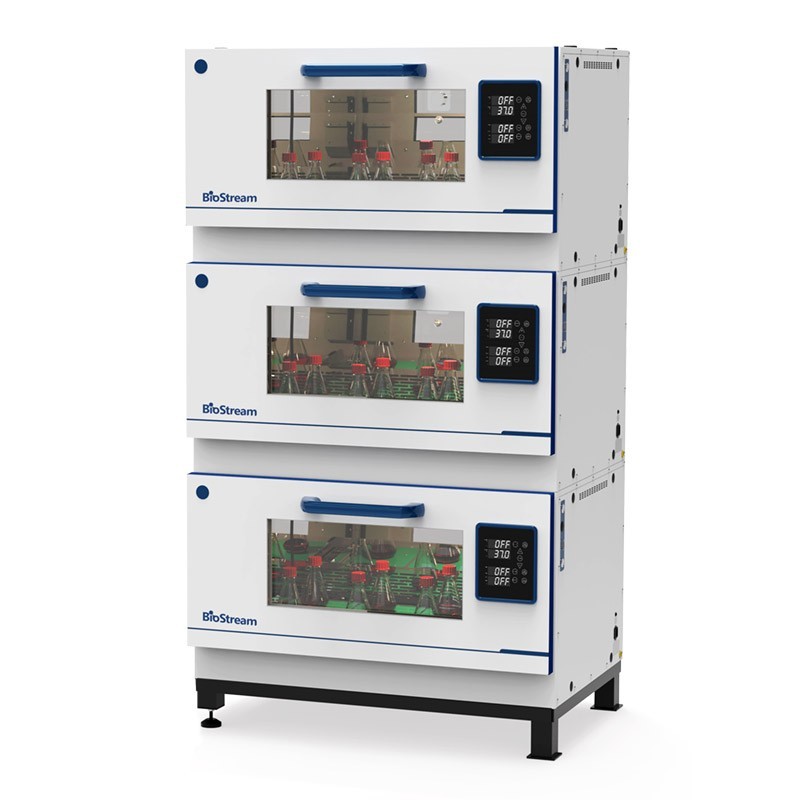
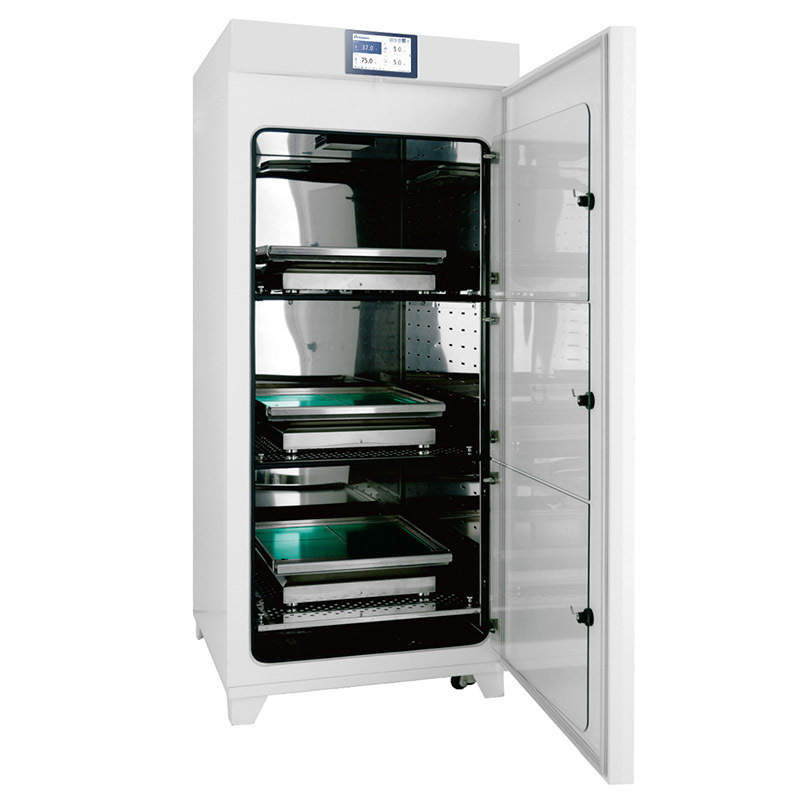
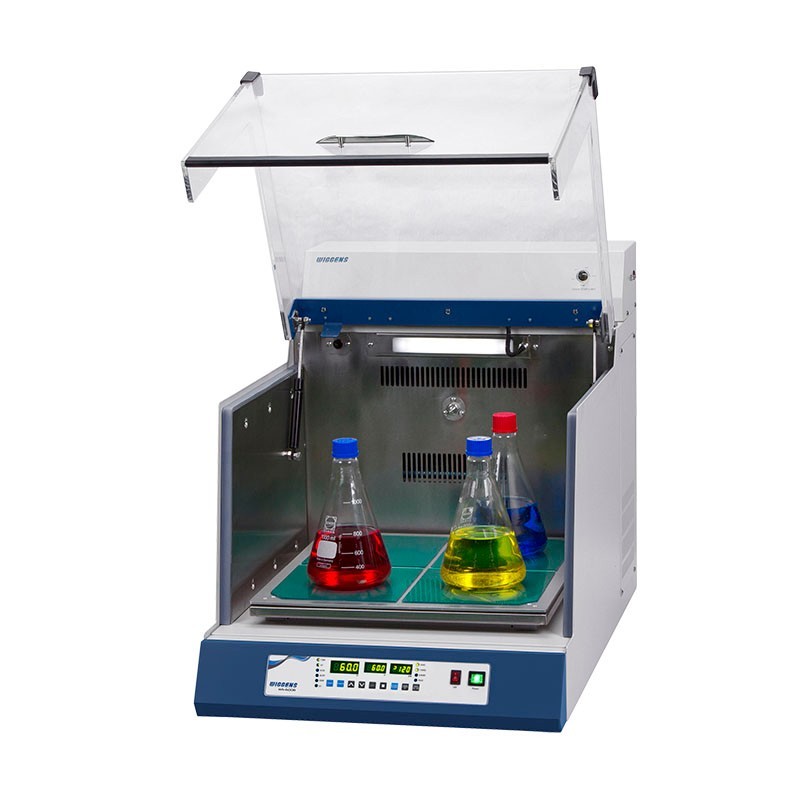
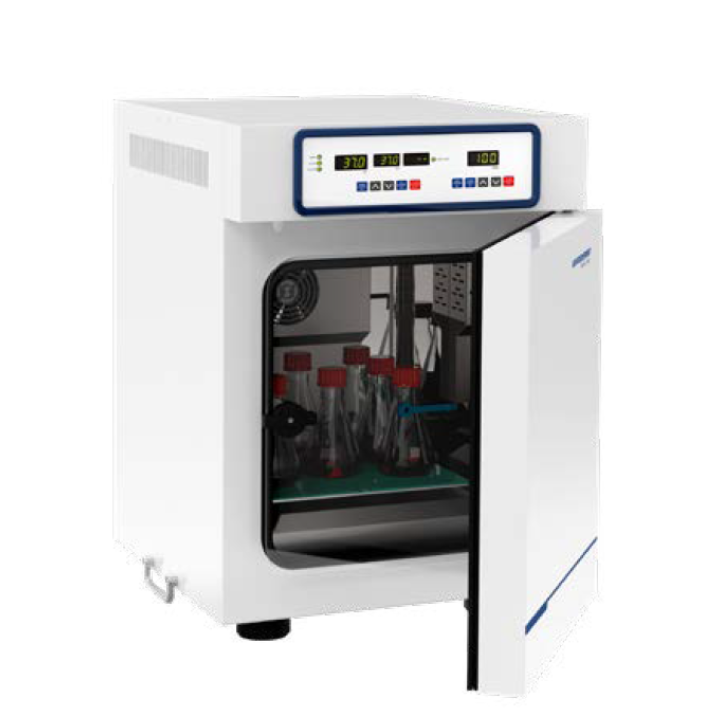
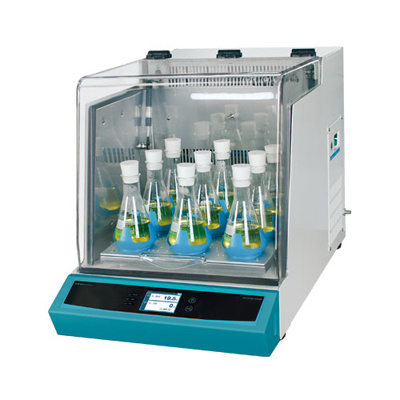
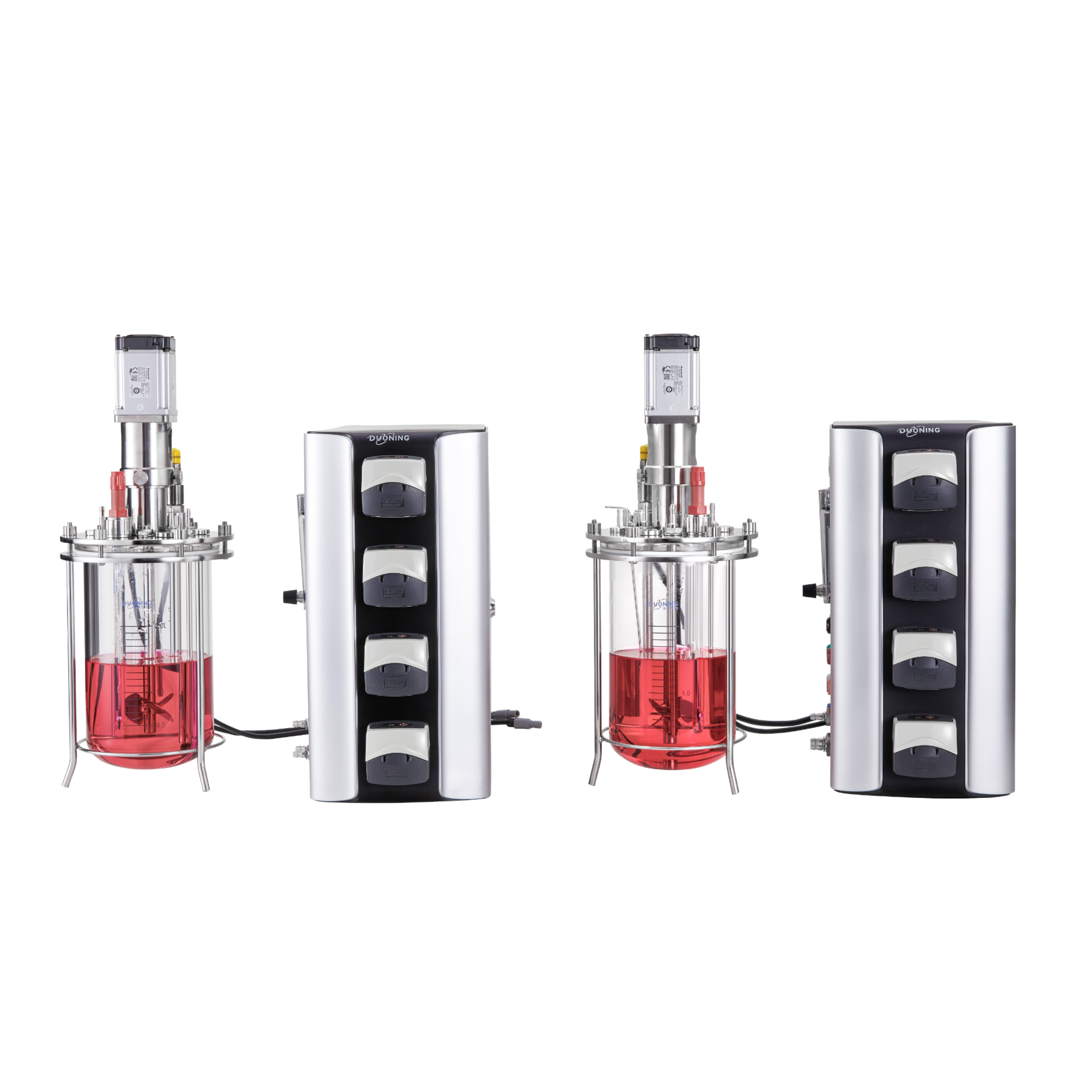
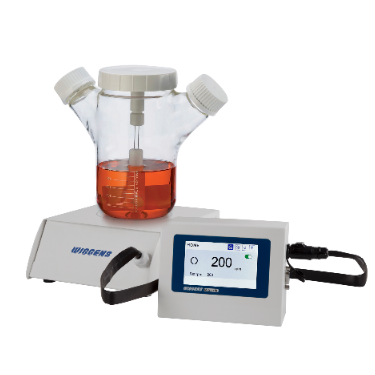
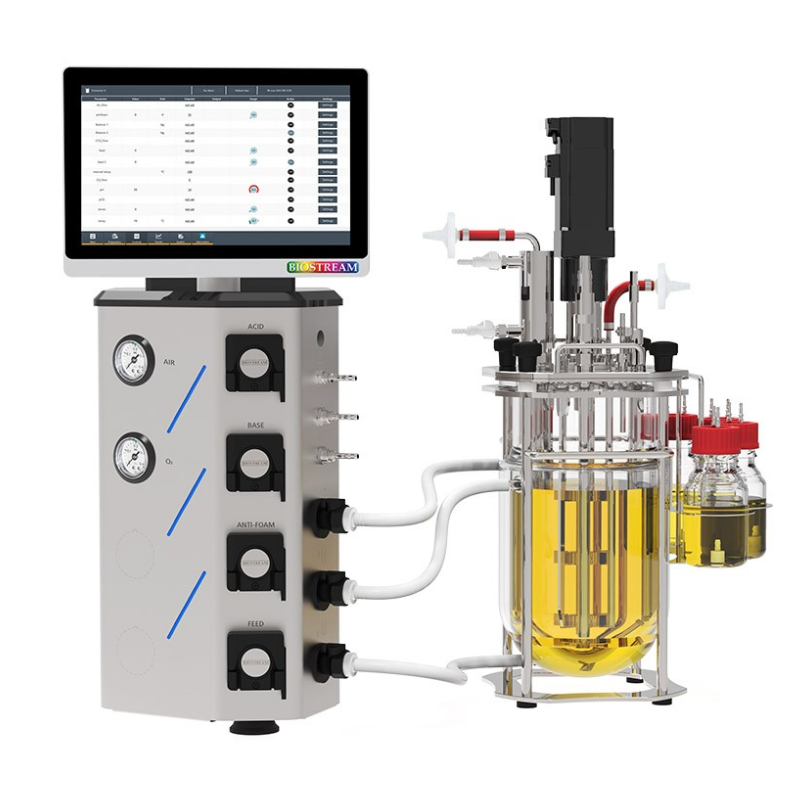
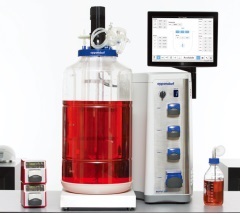
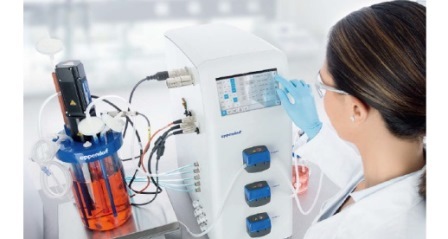
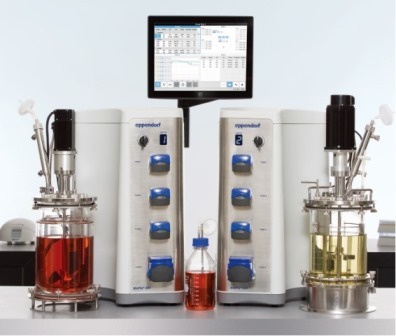
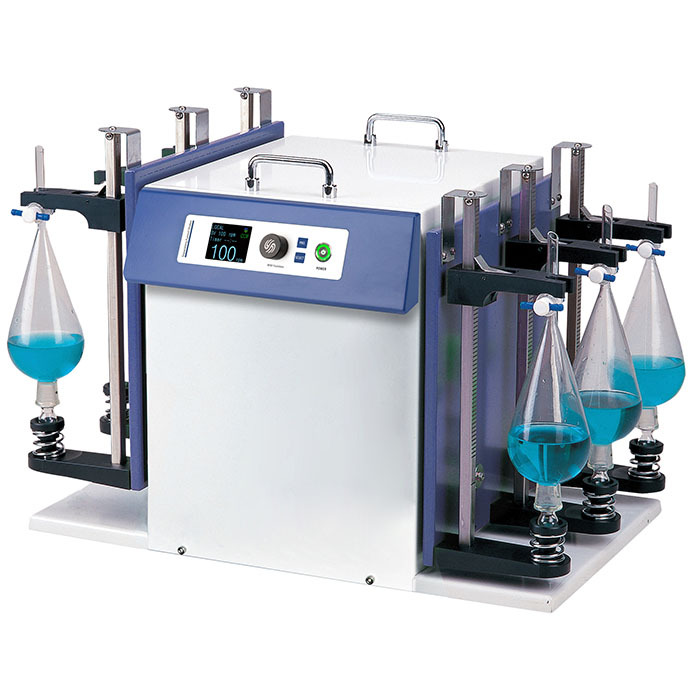
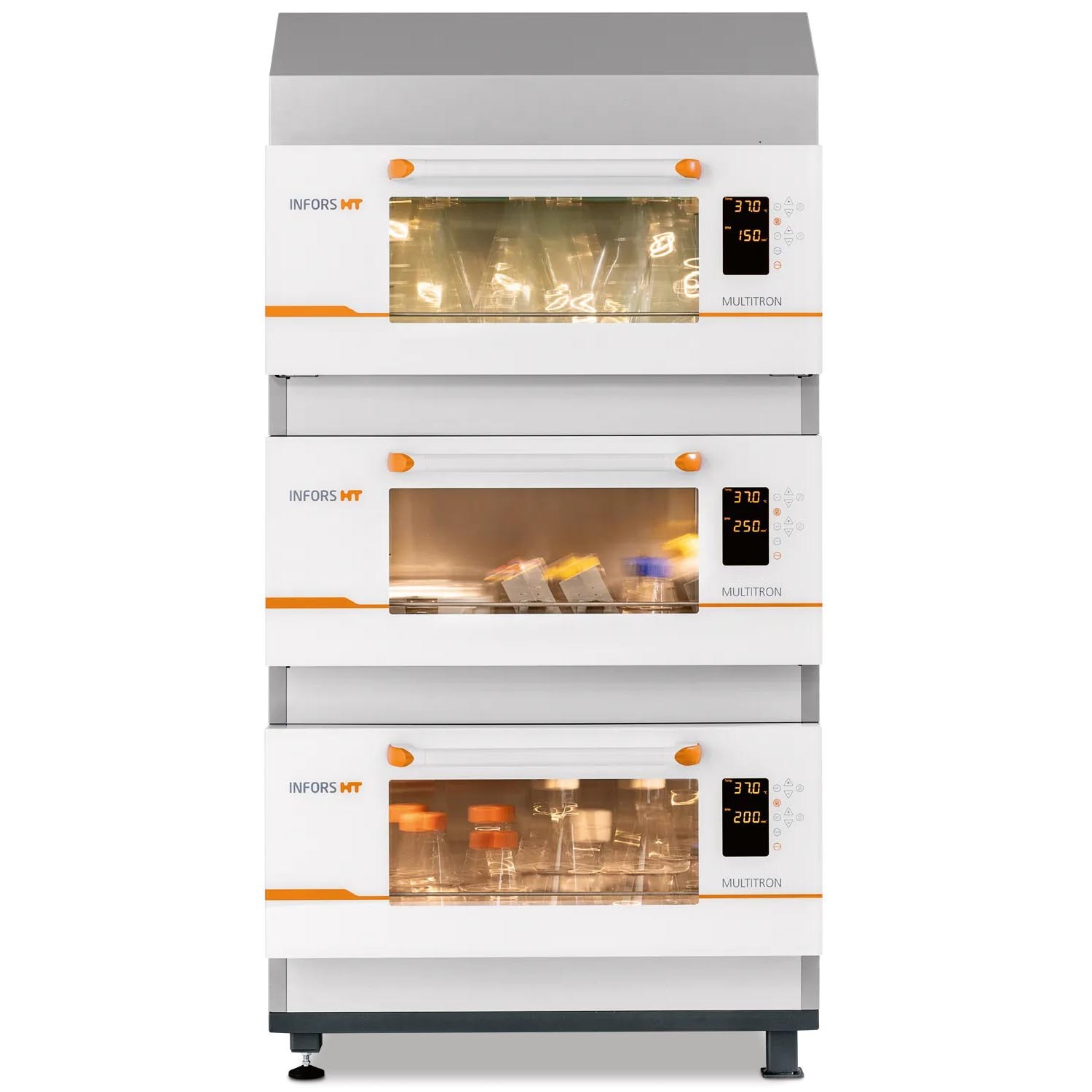
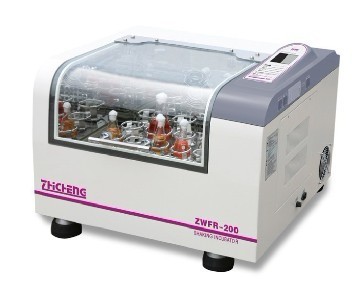
 咨询
咨询
